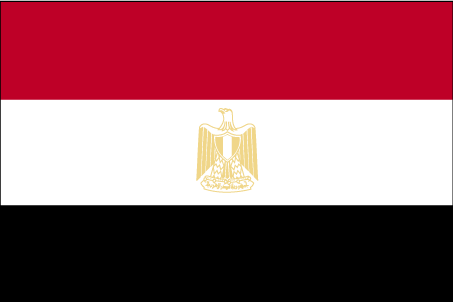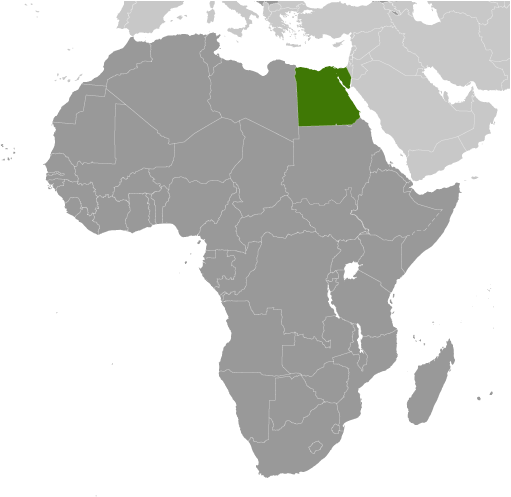
|
|
Advertisements:
People And SocietyNationality
Noun Egyptian(s)
Adjective Egyptian Ethnic groups
Egyptian 99.6%, other 0.4% (2006 census) Languages
Arabic (official), English and French widely understood by educated classes Religions
Muslim (mostly Sunni) 90%, Coptic 9%, other Christian 1% Population World Ranking: 15
83,688,164 (July 2012 est.)
Age structure
0-14 years
32.7% (male 13,725,282/female 13,112,157) 15-64 years 62.8% (male 26,187,921/female 25,353,947) 65 years and over 4.5% (male 1,669,313/female 2,031,016) (2011 est.) Median age
Total 24.6 years
Male 24.3 years Female 24.9 years (2012 est.) Population growth rate World Ranking: 59
1.922% (2012 est.)
Birth rate World Ranking: 65
24.22 births/1,000 population (2012 est.) Death rate World Ranking: 191
4.8 deaths/1,000 population (July 2012 est.) Net migration rate World Ranking: 122
-0.2 migrant(s)/1,000 population (2012 est.) Urbanization
Urban population
43.4% of total population (2010) Rate of urbanization 2.1% annual rate of change (2010-15 est.) Major cities - population
CAIRO (capital) 10.902 million; Alexandria 4.387 million (2009) Sex ratio
At birth 1.05 male(s)/female
Under 15 years 1.05 male(s)/female 15-64 years 1.03 male(s)/female 65 years and over 0.82 male(s)/female Total population 1.03 male(s)/female (2011 est.) Maternal mortality rate World Ranking: 92
66 deaths/100,000 live births (2010) Infant mortality rate World Ranking: 82
Total 24.23 deaths/1,000 live births
Male 25.8 deaths/1,000 live births Female 22.59 deaths/1,000 live births (2012 est.) Life expectancy at birth World Ranking: 121
Total population 72.93 years
Male 70.33 years Female 75.66 years (2012 est.) Total fertility rate World Ranking: 65
2.94 children born/woman (2012 est.) Health expenditures World Ranking: 96
6.4% of GDP (2009)
Physicians density
2.83 physicians/1,000 population (2009) Hospital bed density
1.7 beds/1,000 population (2009) Hiv/aids - adult prevalence rate World Ranking: 122
Less than 0.1% (2009 est.)
Hiv/aids - people living with hiv/aids World Ranking: 94
11,000 (2009 est.)
Hiv/aids - deaths World Ranking: 84
Fewer than 500 (2009 est.)
Major infectious diseases
Degree of risk Intermediate
Food or waterborne diseases Bacterial diarrhea, hepatitis A, and typhoid fever Vectorborne disease Rift Valley feverWater contact disease Schistosomiasis Note Highly pathogenic H5N1 avian influenza has been identified in this country; it poses a negligible risk with extremely rare cases possible among US citizens who have close contact with birds
(2009) Obesity - adult prevalence rate World Ranking: 8
30.3% (2006)
Children under the age of 5 years underweight World Ranking: 74
6.8% (2008)
Education expenditures World Ranking: 109
3.8% of GDP (2008)
Literacy
Definition
Age 10 and over can read and write Total population 72%Male 80.3% Female 63.5% (2010 est.) School life expectancy (primary to tertiary education)
Total 11 years
Male 11 years Female 11 years (2004) Unemployment, youth ages 15-24 World Ranking: 32
Total 24.8%
Male 17.2% Female 47.9% (2007)
Comments
Add a new comment: |
Advertisement
Members area
Egypt (Cairo):
 
GPS points from Egypt (Cairo)
|
||||||||

 The regularity and richness of the annual Nile River flood, coupled with semi-isolation provided by deserts to the east and west, allowed for the development of one of the world's great civilizations. A unified kingdom arose circa 3200 B.C., and a series of dynasties ruled in Egypt for the next three millennia. The last native dynasty fell to the Persians in 341 B.C., who in turn were replaced by the Greeks, Romans, and Byzantines. It was the Arabs who introduced Islam and the Arabic language in the 7th century and who ruled for the next six centuries. A local military caste, the Mamluks took control about 1250 and continued to govern after the conquest of Egypt by the Ottoman Turks in 1517. Following the completion of the Suez Canal in 1869, Egypt became an important world transportation hub, but also fell heavily into debt. Ostensibly to protect its investments, Britain seized control of Egypt's government in 1882, but nominal allegiance to the Ottoman Empire continued until 1914. Partially independent from the UK in 1922, Egypt acquired full sovereignty with the overthrow of the British-backed monarchy in 1952. The completion of the Aswan High Dam in 1971 and the resultant Lake Nasser have altered the time-honored place of the Nile River in the agriculture and ecology of Egypt. A rapidly growing population (the largest in the Arab world), limited arable land, and dependence on the Nile all continue to overtax resources and stress society. The government has struggled to meet the demands of Egypt's growing population through economic reform and massive investment in communications and physical infrastructure. Egyptian youth and opposition groups, inspired by events in Tunisia leading to overthrow of the government there, organized a "Day of Rage" campaign on 25 January 2011 (Police Day) to include non-violent demonstrations, marches, and labor strikes in Cairo and other cities throughout Egypt. Protester grievances focused on police brutality, state emergency laws, lack of free speech and elections, high unemployment, rising food prices, inflation, and low minimum wages. Within several days of the onset of protests, President MUBARAK addressed the nation pledging the formation of a new government, and in a second address he offered additional concessions, which failed to assuage protesters and resulted in an escalation of the number and intensity of demonstrations and clashes with police. On 11 February MUBARAK resigned and national leadership was assumed by a Supreme Council of Armed Forces (SCAF). The SCAF dissolved the Egyptian parliament, suspended the nation's constitution, and formed a committee to recommend constitutional changes to facilitate a political transition through democratic elections. Following some delays, elections for a new parliament took place between November 2011 and January 2012. Presidential elections held in May and June witnessed the victory of Muslim Brotherhood candidate Mohammed MURSI over former Prime Minister Ahmed SHAFIQ.
The regularity and richness of the annual Nile River flood, coupled with semi-isolation provided by deserts to the east and west, allowed for the development of one of the world's great civilizations. A unified kingdom arose circa 3200 B.C., and a series of dynasties ruled in Egypt for the next three millennia. The last native dynasty fell to the Persians in 341 B.C., who in turn were replaced by the Greeks, Romans, and Byzantines. It was the Arabs who introduced Islam and the Arabic language in the 7th century and who ruled for the next six centuries. A local military caste, the Mamluks took control about 1250 and continued to govern after the conquest of Egypt by the Ottoman Turks in 1517. Following the completion of the Suez Canal in 1869, Egypt became an important world transportation hub, but also fell heavily into debt. Ostensibly to protect its investments, Britain seized control of Egypt's government in 1882, but nominal allegiance to the Ottoman Empire continued until 1914. Partially independent from the UK in 1922, Egypt acquired full sovereignty with the overthrow of the British-backed monarchy in 1952. The completion of the Aswan High Dam in 1971 and the resultant Lake Nasser have altered the time-honored place of the Nile River in the agriculture and ecology of Egypt. A rapidly growing population (the largest in the Arab world), limited arable land, and dependence on the Nile all continue to overtax resources and stress society. The government has struggled to meet the demands of Egypt's growing population through economic reform and massive investment in communications and physical infrastructure. Egyptian youth and opposition groups, inspired by events in Tunisia leading to overthrow of the government there, organized a "Day of Rage" campaign on 25 January 2011 (Police Day) to include non-violent demonstrations, marches, and labor strikes in Cairo and other cities throughout Egypt. Protester grievances focused on police brutality, state emergency laws, lack of free speech and elections, high unemployment, rising food prices, inflation, and low minimum wages. Within several days of the onset of protests, President MUBARAK addressed the nation pledging the formation of a new government, and in a second address he offered additional concessions, which failed to assuage protesters and resulted in an escalation of the number and intensity of demonstrations and clashes with police. On 11 February MUBARAK resigned and national leadership was assumed by a Supreme Council of Armed Forces (SCAF). The SCAF dissolved the Egyptian parliament, suspended the nation's constitution, and formed a committee to recommend constitutional changes to facilitate a political transition through democratic elections. Following some delays, elections for a new parliament took place between November 2011 and January 2012. Presidential elections held in May and June witnessed the victory of Muslim Brotherhood candidate Mohammed MURSI over former Prime Minister Ahmed SHAFIQ.